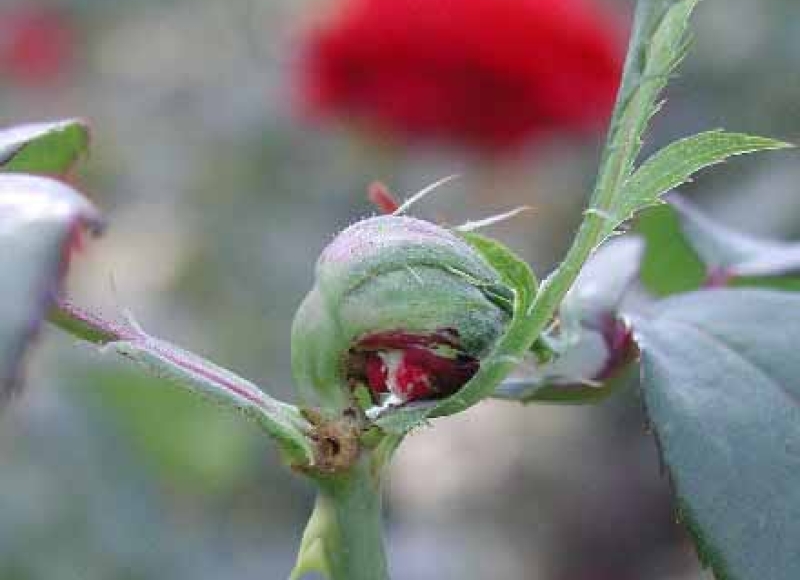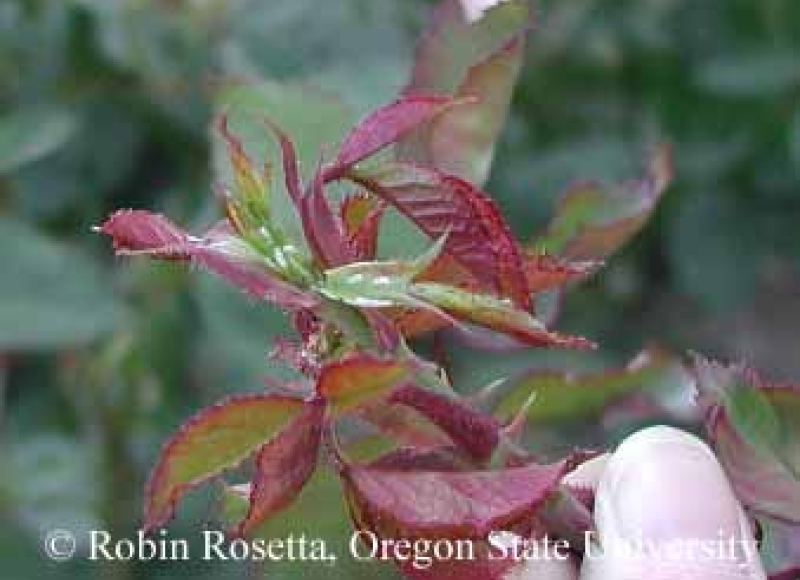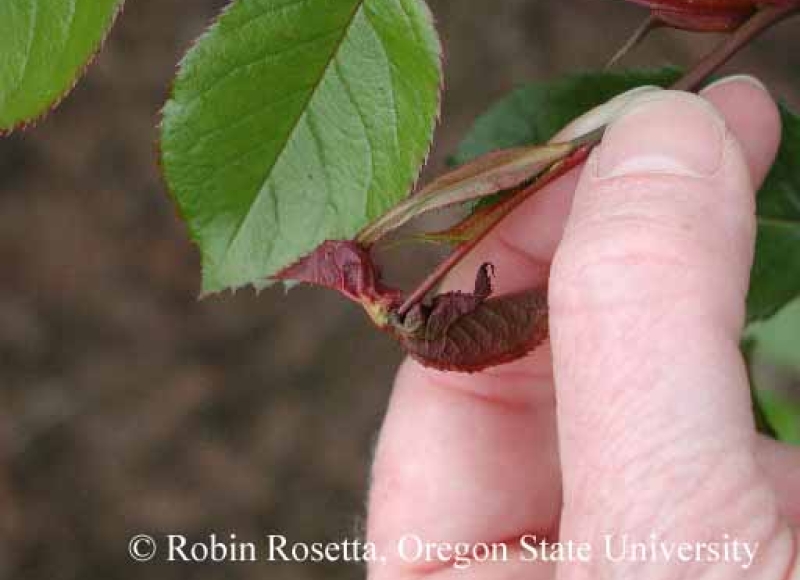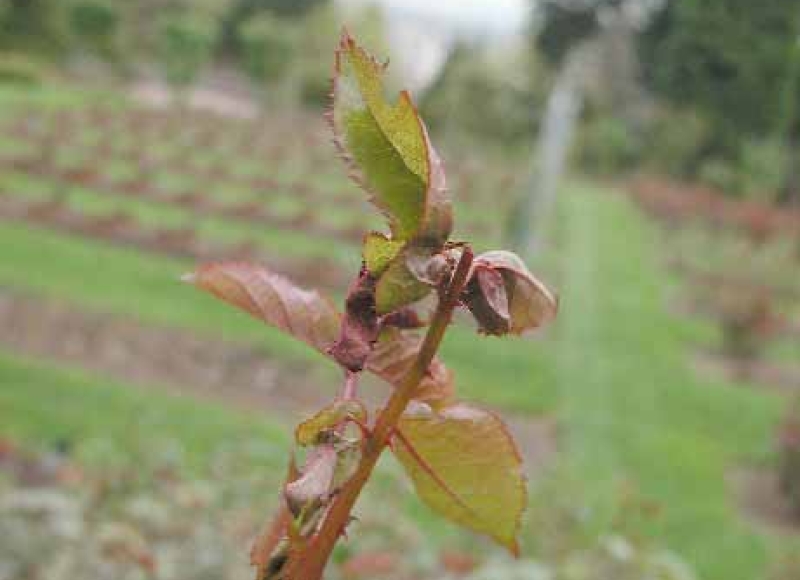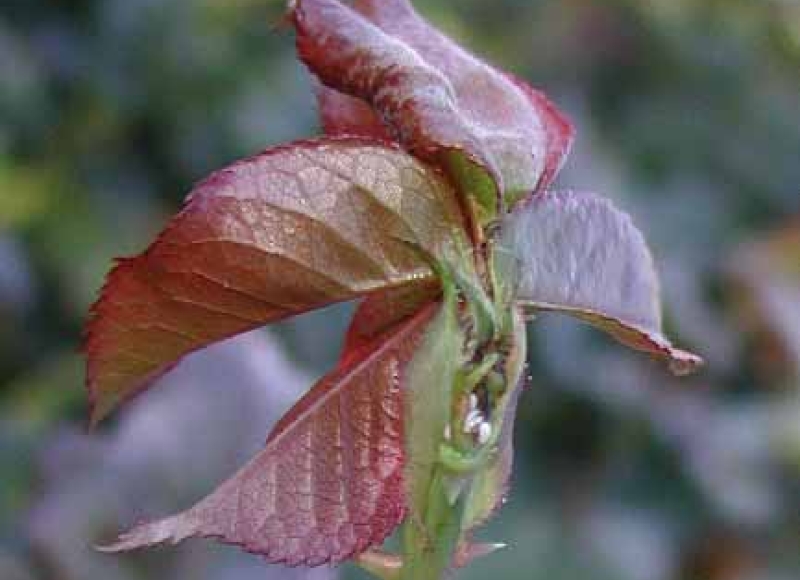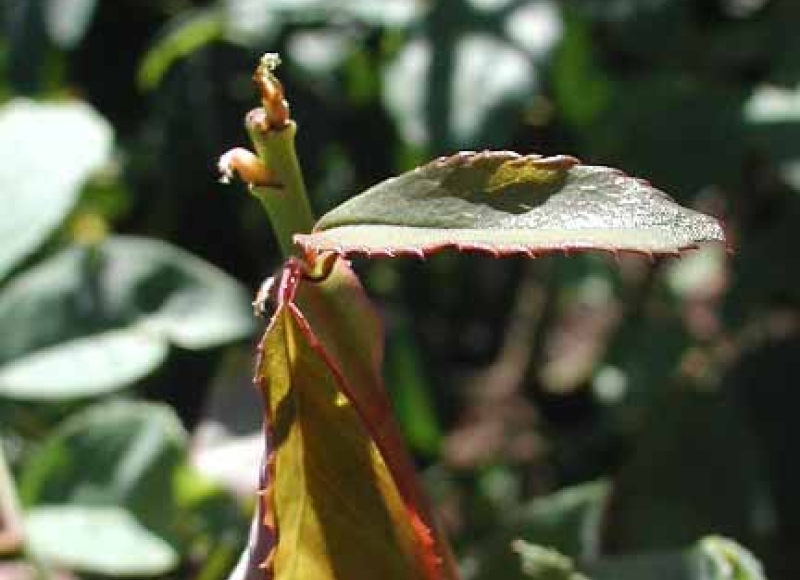The rose midge, Dasineura rhodophaga Coquillett (Diptera: Cecidomyiidae) is an uncommon but damaging pest of roses. Damage from the midge was first reported in 1886 in New Jersey. There are accounts of its infestation in the Pacific Northwest, California, the Northeastern states, Colorado, Illinois, Ohio, Wisconsin, and the Canadian provinces of British Columbia and Ontario. The distribution and occurrence of the midge will likely increase. The adult midge lays its eggs inside the sepals of new flower and leaf buds. The tiny maggot that hatches feeds in these areas causing blackened tissue, tip abortion, and distorted flower buds.
In 2004, the first damage of the season was reported on April 13 at the International Rose Test Garden (IRTG) in Portland, Oregon. Rose midge damage tends to increase through the season. Sampling of new shoots during the 2004 season showed two peaks of damage: in late June/early July and late August/early September.
Our work with rose midge in 2005 at the IRTG comparing one "pre-emergent" application of Merit (imidacloprid) and Tempo (cyfluthrin) applications begun in April and applied every two weeks throughout the growing season (12 applications) showed statistically equivalent control between the two treatments. Both treatments kept damage around 2% while the untreated control had 54% damaged buds.
For more details on the 2005 trials, see the Final Report of Investigation of Phenology and Management of Rose Midge, Dasineura
rhodophaga.
Cultural control
Rose midge may be moving into new sites/plantings via infested plants, particularly the difficult to detect larval/pupal stage in the soil. One method to reduce the risk of introduction of this pest is to buy bare root roses or to discard the soil and rinse the roots of plants brought in from infested sites. There is anecdotal evidence that removing the mulch at the end of the growing season in the late fall and replacing with fresh mulch may remove the overwintering stage of the midge which generally is quite shallow, in the top 1-2" of soil.
Original version: <27 August 2003>
Last update <2 August 2019>
Author: R.L. Rosetta, Extension Nursery Integrated Pest Management, Department of Horticulture, Oregon State University/NWREC.


